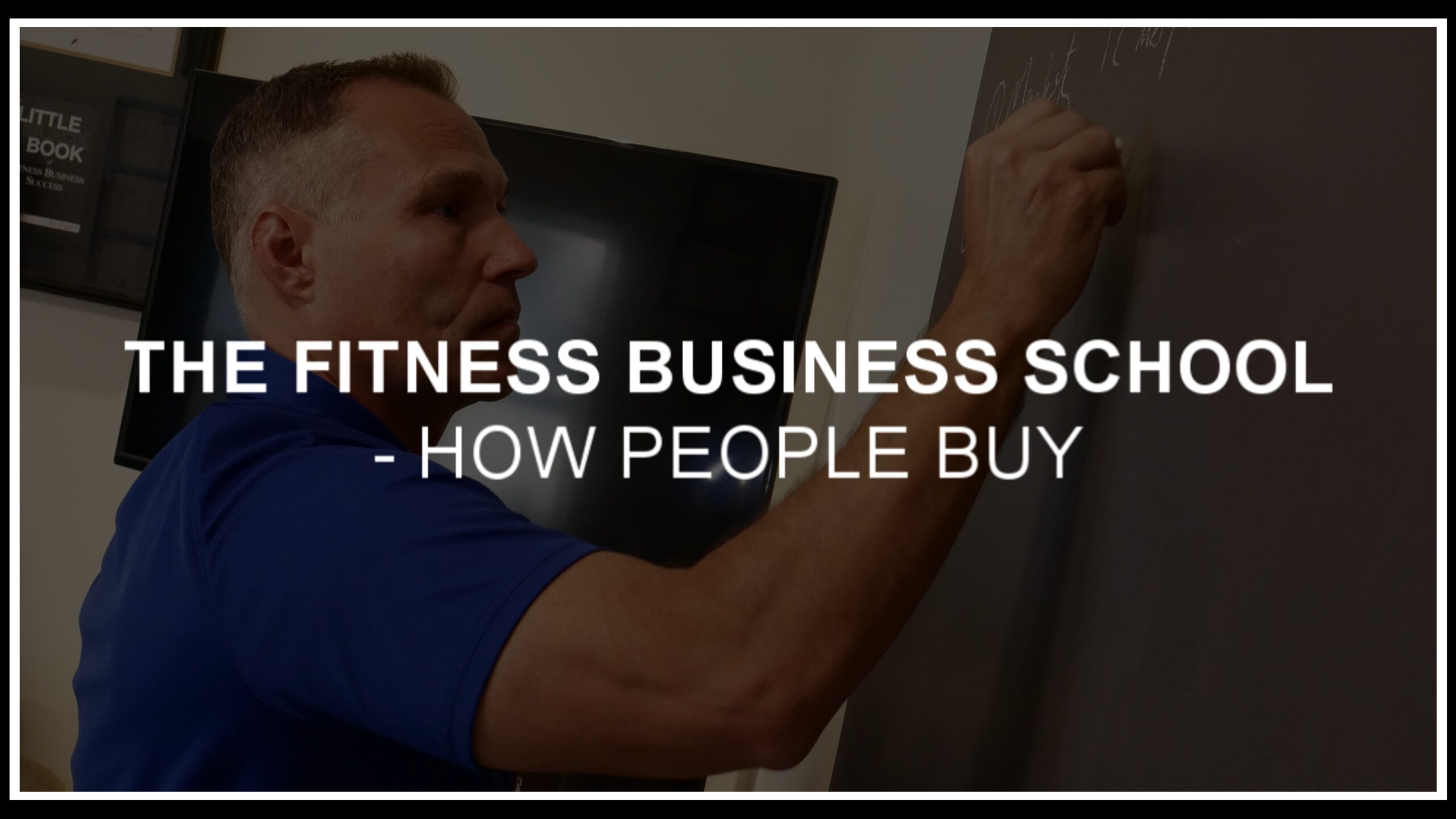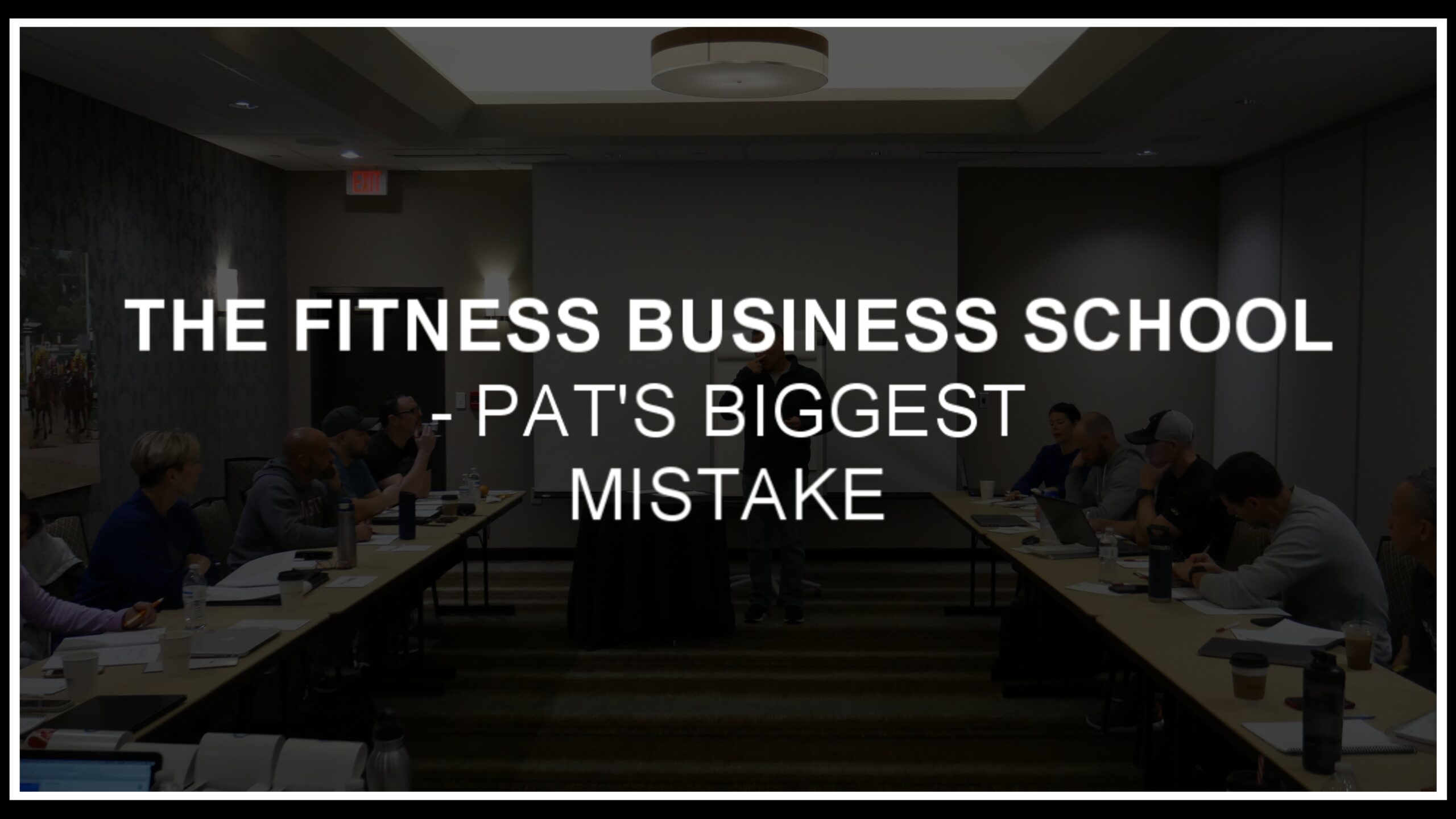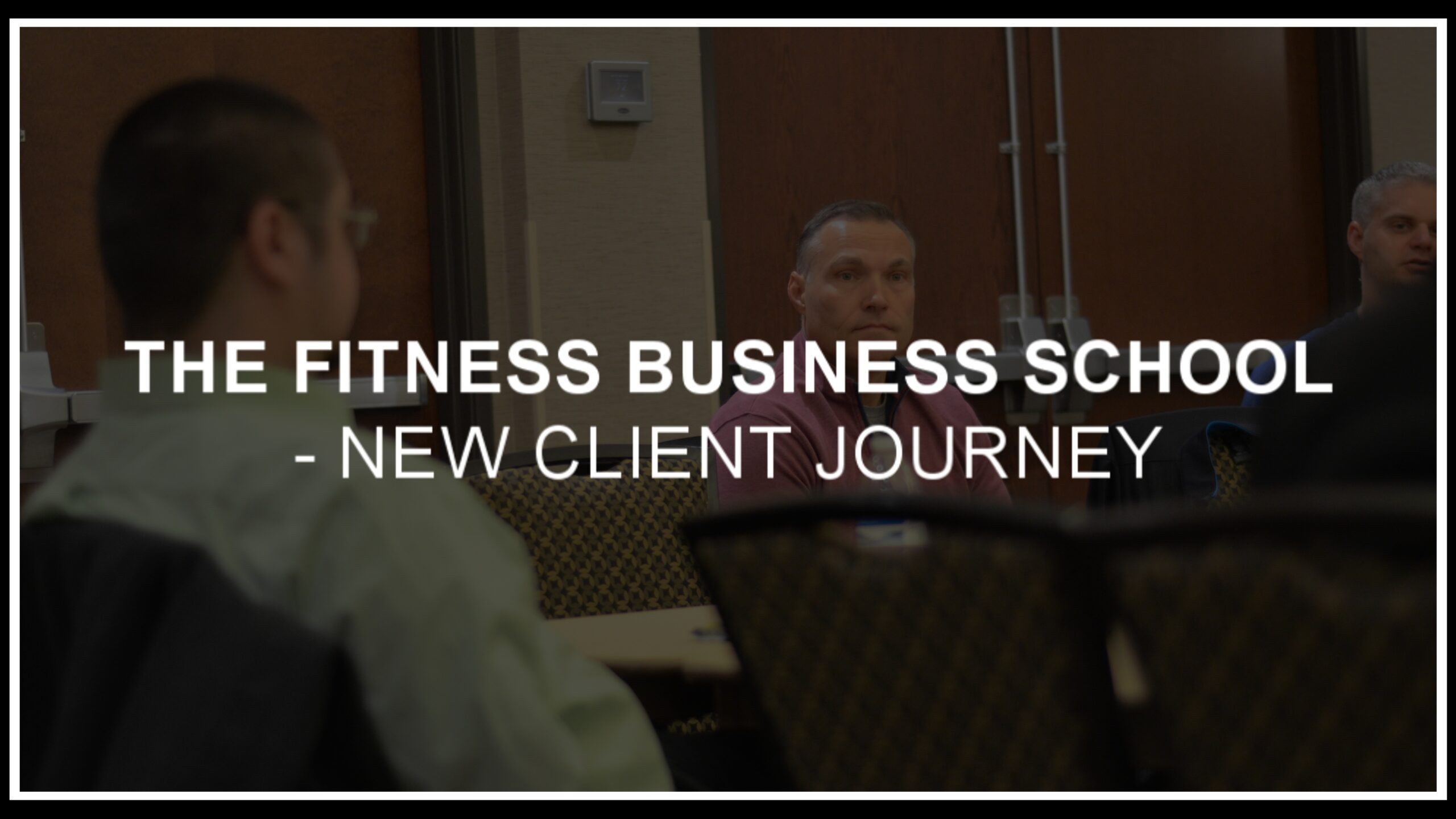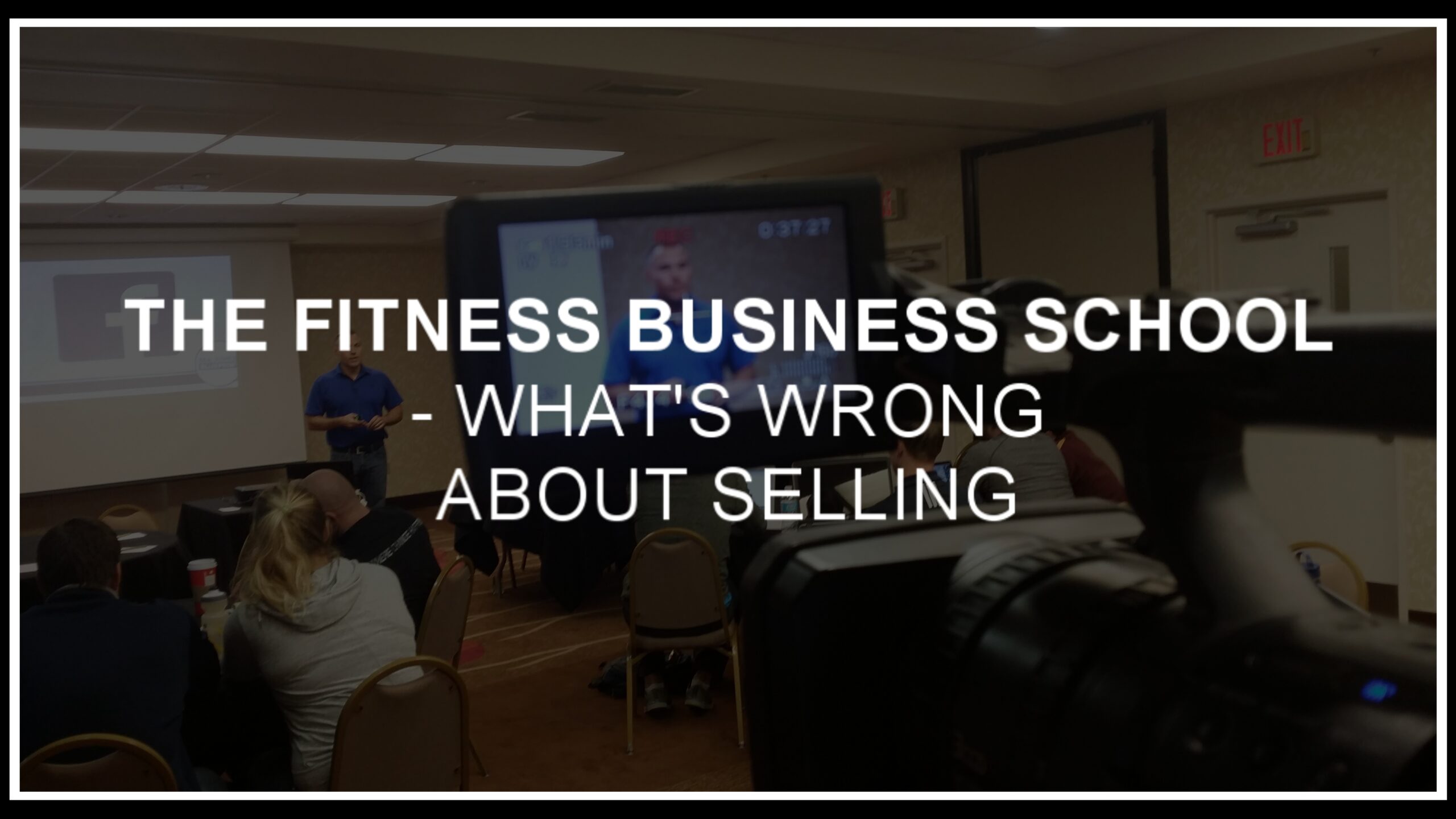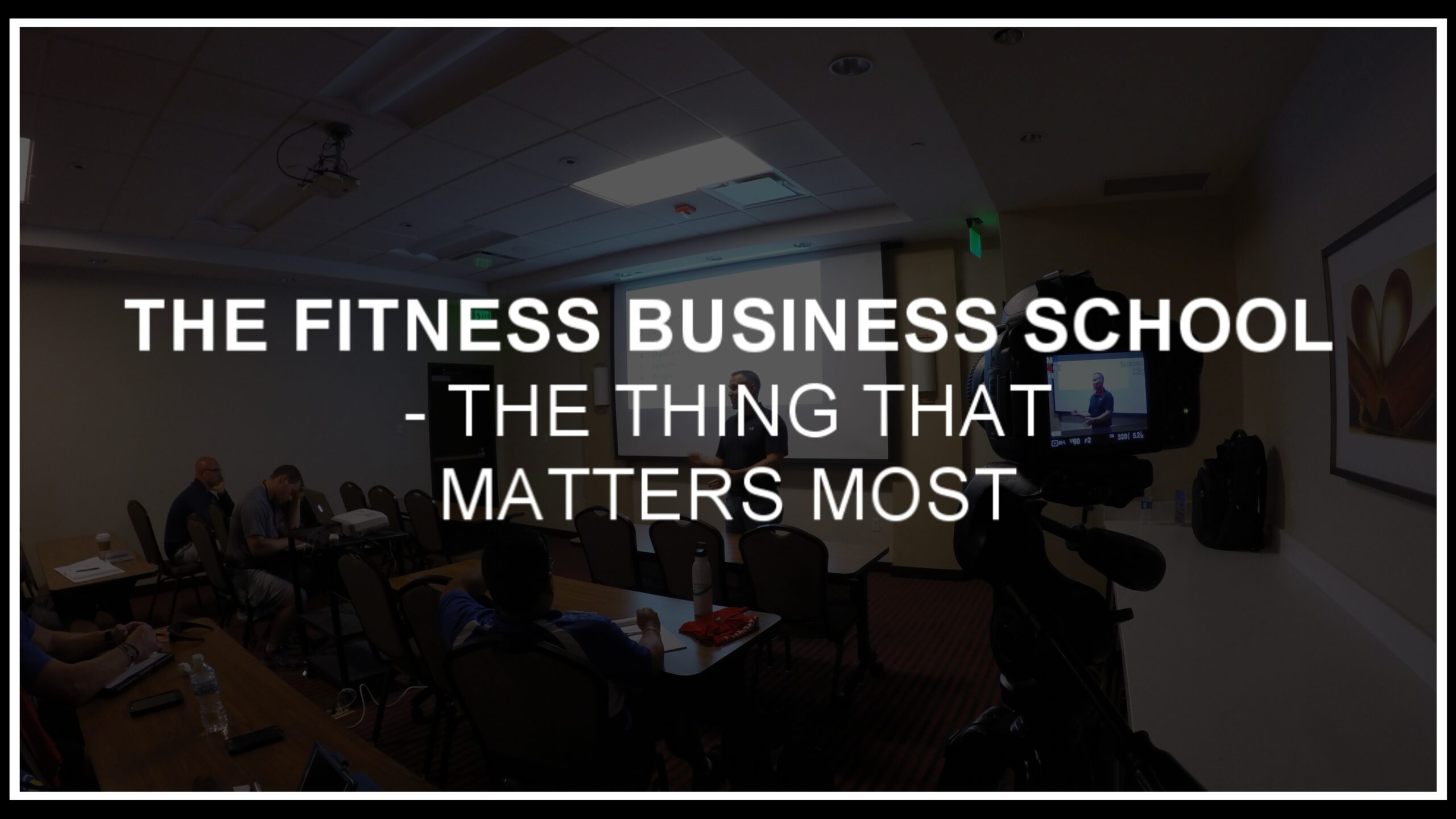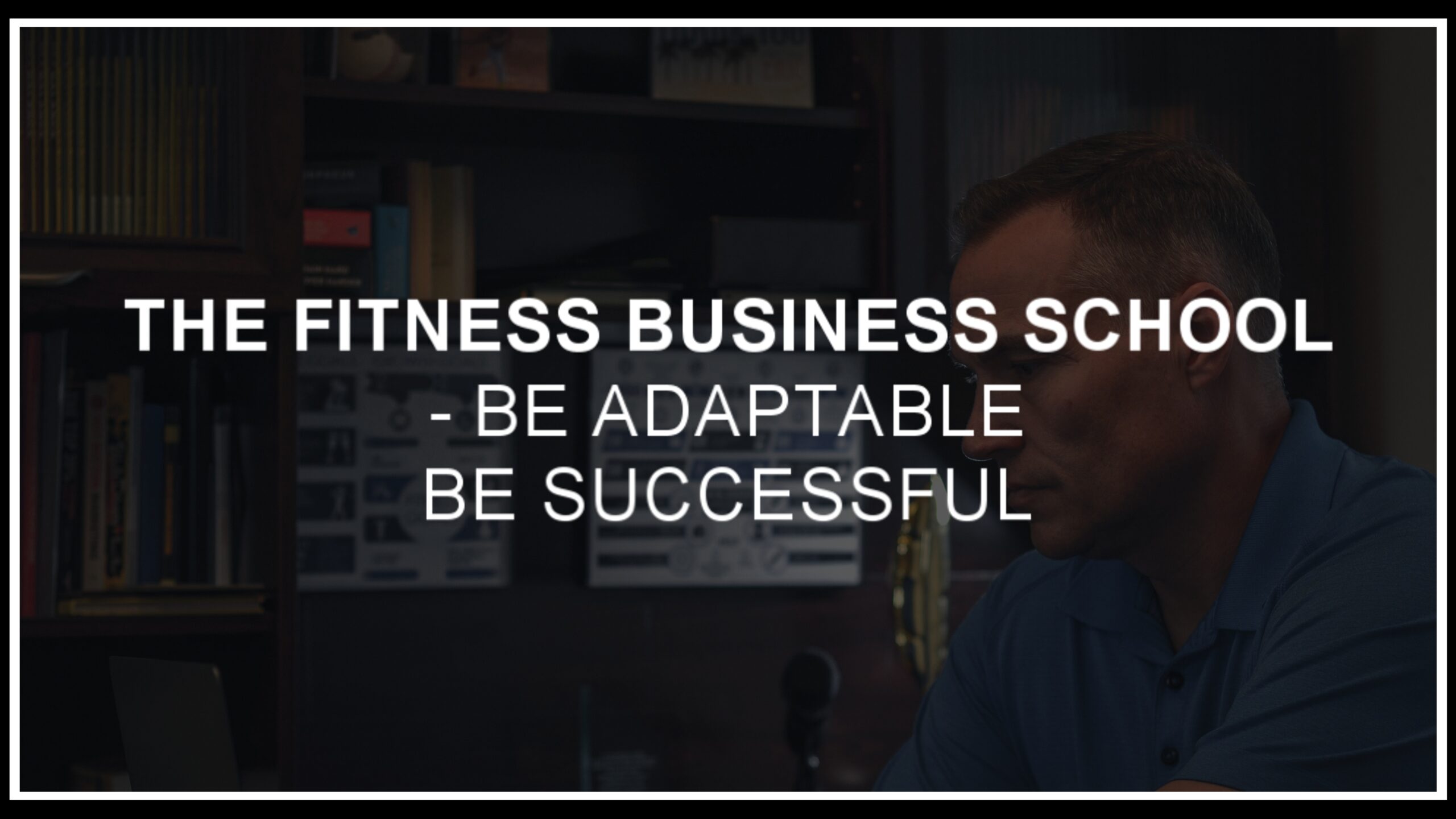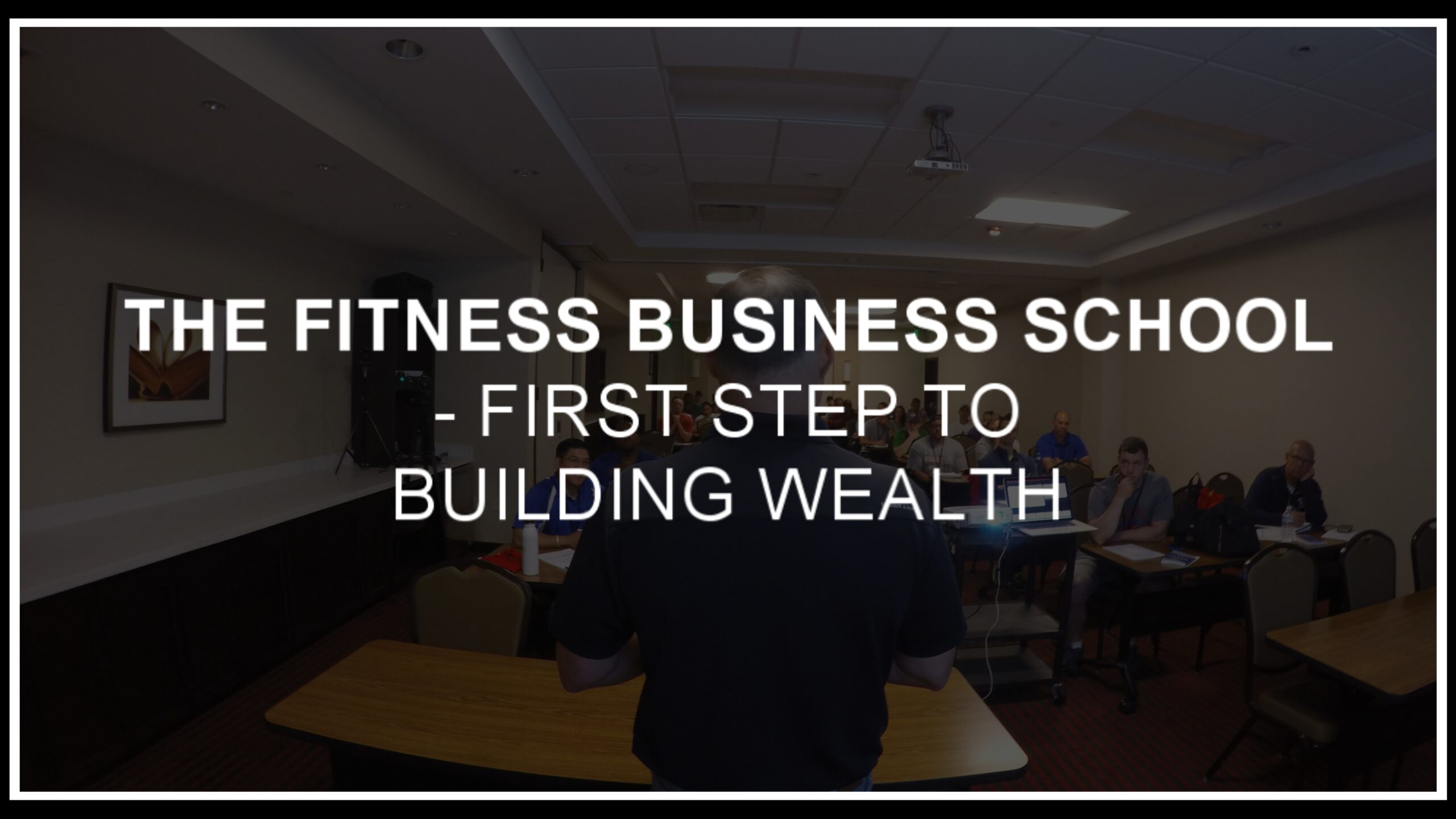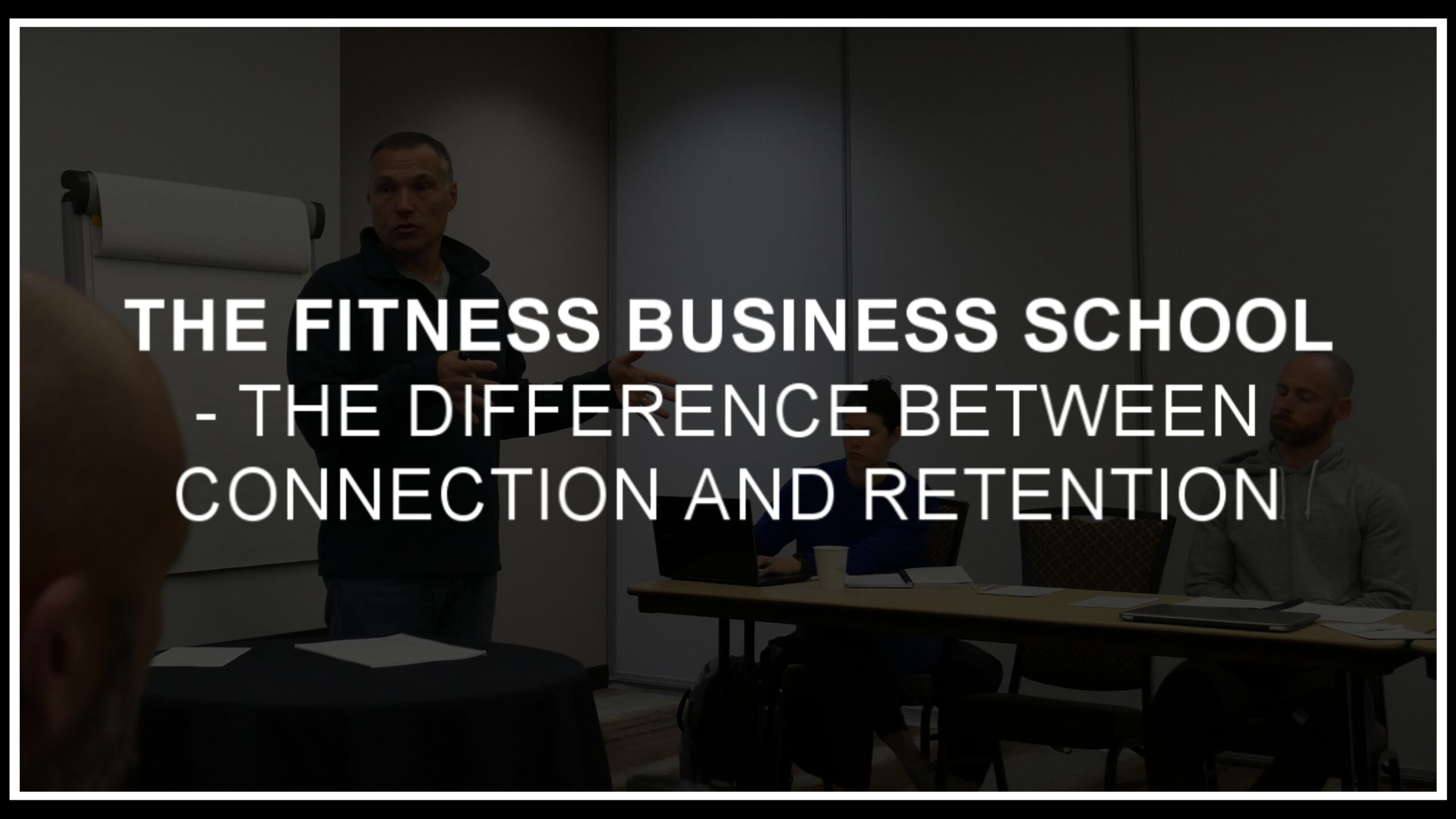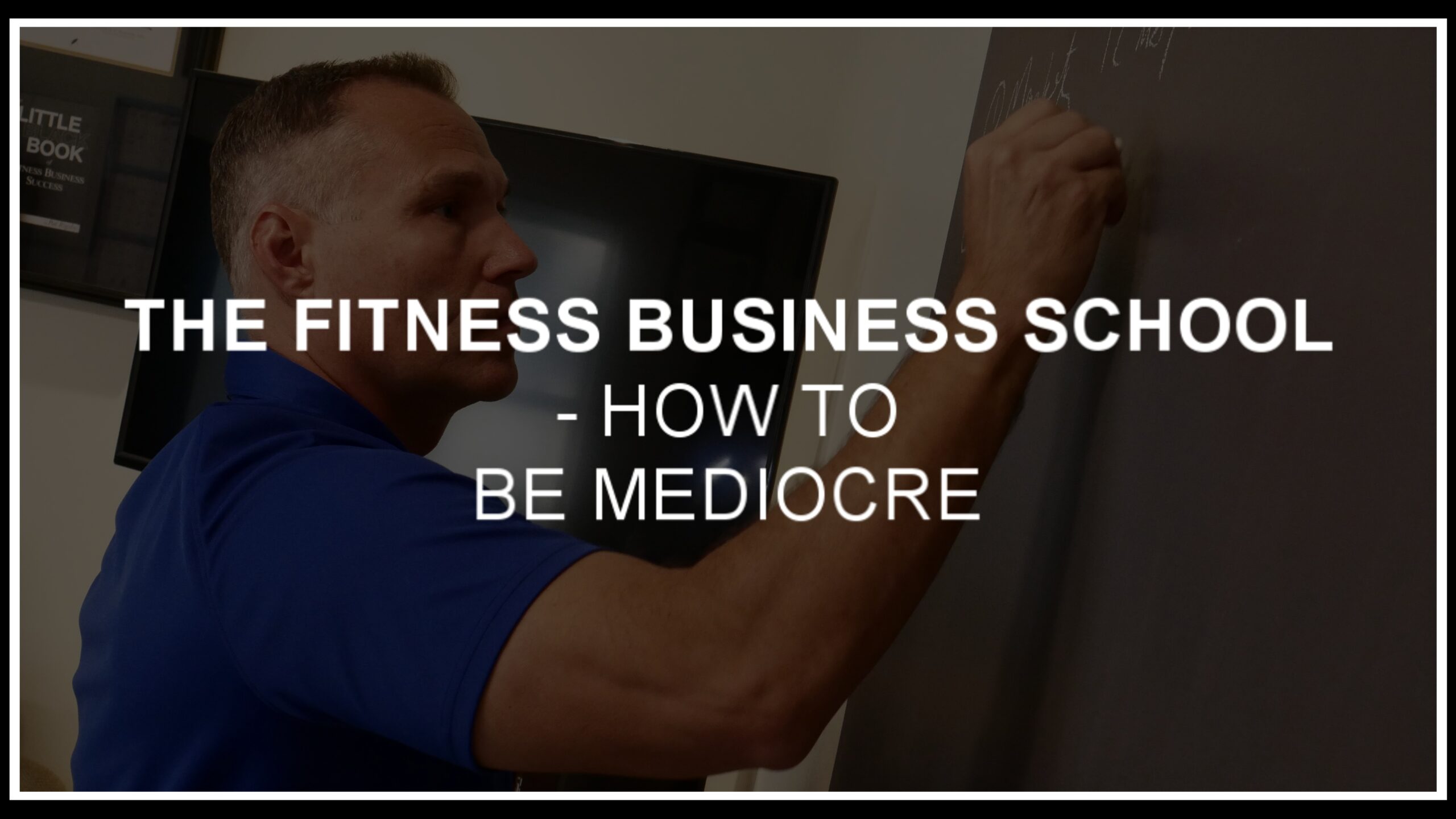Show Notes
- Your perspective as seller is different than as a buyer
- You are asking for a big commitment in someone’s life
- Think about the variables in people’s lives
- People rarely buy instantly – keep getting out in front of them
- Having a low-cost option is a great start to higher priced sells
- Make the conversion process smooth and easy
Full Transcript
Hey, Pat Rigsby here and in today’s episode, I wanna talk with you about how people actually make buying decisions. Let’s get started.
Welcome to the Fitness Business School podcast, the show for fitness business owners who want to grow their income, increase their impact and improve their lifestyle. Be sure to listen to the end of this episode because we have a brand new special offer exclusive for listeners. So stay tuned.
Whenever I get to talk with business owners about their conversion process, I’m always curious about how they think and how they operate, because I think that they almost have split personalities a lot of the time. I think that they have the sales person, business owner personality, where it’s I expect the consumer to do the things that I want them to do in the order and on the timeline that I want them to do those things.
And if they don’t, then that’s a flaw in the consumer. And then on the, the other side of the coin, you know, when the, the business owner is in the kind of situation where they’re the, the buyer or their prospective buyer, they behave like a normal prospective buyer. They make their decisions entirely different than in a different fashion than they would want their prospects to make decisions. And sometimes when I kind of throw the mirror up and point this out to people, they instantly get it and they kinda laugh and they start to change how they approach their conversion process. And sometimes it’s the opposite. Sometimes they make excuses and they kind of argue the point and they say, well, it’s not the same, or something like that. But the reality is, we are asking somebody to make a significant change, right? Make an important decision.
That is not a disposable decision, right? Like a disposable decision for me is what are we gonna have for dinner on Wednesday? By the time you get around to Thursday, unless you made an awful decision, it probably doesn’t matter a whole lot, you’re onto a new day, right? We’re asking somebody to make a decision that is a significant and usually ongoing financial investment. We’re asking them to basically
commit future time, and not just today’s time, but time in an ongoing fashion, multiple times per week. So we’re not talking about, Hey, you have this one appointment once a month. It is, no, you need to come two or three times a week. And in most businesses case, those sessions are 45 to 60 minutes. Yes, I know there are some people who do 30 minute sessions and we did wonderfully with 30 minute sessions in one
of our businesses.
But most are 45 to 60 minute sessions not counting the time to get to the venue to get home from the venue or back to work, and any other kind of added transition time into the normal day, that might have had to happen if somebody needs to shower to go back into the office or something like that. Plus, we’re also asking people to rearrange their current schedule because obviously the easiest thing for somebody to do is just keep doing what they’re doing. So if you’re saying, Hey, come to this thing, that changes somebody’s schedule. I know right now, I go to an appointment that, that I have on Thursday mornings that is at 6:00 AM and it changes the way that we operate a little bit in the morning because Alex gets on the bus at seven.
And so any interaction or contribution I would’ve had to him getting out the door for school is all kind of pushed towards Holly. And, frankly, it’s not nearly as much now as it might’ve been when he was in elementary school. And, I probably had a little bit more, he was a
little less independent and needed a little more help or, and probably a little more challenging at that point. So, so there are all these variables, not to mention the self-image or psychological variables. Hey, I’ve done this before and I had a negative experience and I don’t wanna fail again, or I’m gonna be embarrassed when I go there, or I’m not gonna know anybody when I go there. All these hangups that might stand in somebody’s way, I think that we don’t acknowledge much of any of ’em right?
Well, when I say we, I would say that 90% of the business owners that I have this conversation with the first time, they do not acknowledge or appreciate any of this stuff until we talk through it. They think through, they see the world through their lens, right? They say, well, we’re delivering something valuable. The people who are here love it. The people who are here get good results. It’s a good value for what
people spend. Everybody should do this. This is an important part of people’s lives. So they’re seeing it that way, and they’re not thinking about it through the other person’s perspective. And yet when I talk to people, Hey, how long have you been on my email list? Or part of, our community of receiving emails or listening to podcasts before you decide to join a coaching program?
Invariably, the answers are all like a year, 18 months, something like that. I’m like, well, you didn’t just buy instantly. I mean, why wouldn’t you want business coaching, right? Why wouldn’t you want help from somebody who has my type of track record or whatever else? Don’t you want the best for your family? Don’t you want the best for your business? Don’t you want to do things in a way that are sustainable over the long haul? I mean, that logic sounds great, but if that’s not what the consumer’s thinking, then it doesn’t really matter. So when you are connecting with the prospect, we want to create an environment where it’s easy for them to take the next step. I had somebody email me the other day and they told me that their way to get new clients was they posted like the transformations, people they had worked with, I assume it just said transformations, people they had worked with, achieved on TikTok or Instagram, and then they pointed people to an application to work together in the bio, and they didn’t understand why that didn’t work.
And I said, well, I mean, have you ever bought anything that way? And I didn’t hear any response back, but I don’t think that most people, that’s how they buy. I think that there are incremental steps, right? If I did see some sort of transformation somewhere and it had me had my peak, my curiosity, I might do a little bit of research. I might start to learn more about that person. I might try to learn more about their
process, learn more about things beyond the highlight reel and see what they do, how they do it. Are there any reviews that are a little bit more objective than the things that they want me to see? Is there a low risk way to get involved with this person? There’ve been a couple instances where I’ve joined mastermind programs that were in excess. I mean, excess of $30,000 annually.
I mean, there’s one programs like $60,000 annually. And in all those cases, man, I had read their books. I had joined programs that were under a thousand dollars in some cases, bought stuff that was under a hundred dollars because, I wasn’t gonna take this massive leap without having some sort of experience. And I think we have to appreciate that. We have to understand that. And sometimes it breaks
all the way down to can I get people to take the next logical step? There’s a reason why if you read my email newsletter, I ask you to reply and I give you the word to reply with most of the time, instead of sending you to a link and filling out a form or adding your name and scheduling something to a calendar link, because I want you to be able to take the next simplest step to move towards where we’re going.
And that way we can connect and customize the experience for each individual person. So if it makes sense for them to go all the way to having a conversation or joining a program, we can work with them to kind of partner in that journey and be a guide. Not lead them, like, just point them down a hallway and say, good luck, hope, hope to find you at the end of the hallway. And I understand that people think of that as qualifying, but it’s a silly way to qualify because it has nothing to do with the actual experience. I want to qualify people based on desire, based on our ability to solve the problem, based on our, our congruence in understanding what needs to happen to solve the, like, to solve the problem, not because they’re willing to go fill out a Calendly link.
Those two things are unrelated, not because they figured out how to click on a link in a bio and go fill out an application. No, I mean, it, it very much to me is a little bit like when I’ve written bunches of books. I’m an avid reader, but the reality is lots of people buy books because the promise of the title and the description of the book is it’s going to help somebody solve a problem or achieve a goal, but people may not be readers. And reading is probably, in some cases unrelated to them wanting to solve the problem or the things they need to do to solve the problem. So it took a while for me to accept that and say, look, if somebody gets my book, that doesn’t mean if they don’t read the book, it doesn’t mean that they’re a bad candidate.
It means that maybe reading is not the way to help them kind of execute the process. Maybe we have to coach ’em in a different format. So as you kind of think about your conversion process, understand that our objective is to a, make buying simpler for people. Make the entire conversion process simpler, guiding them through every step, making it easy to go from one step to the next step to the next step. And
understanding along that journey, if they’re actually a good fit, not making them jump through a bunch of irrelevant hoops that are unrelated to whether or not they would be a good fit. And then the second thing that I think we have to be cognizant of is if you want people to make impulsive decisions, you gotta sell impulsive buy stuff. And what most people in our industry sell, not impulse, buy stuff, like buying a
bottle of supplements is an impulse buy, right?
It’s a consumable, it’s something that, it’s just a very simple transaction. It’s not a commitment asking somebody to come to your training program three days a week at 6:00 AM that’s a commitment. So the sales cycle should be longer. There are more things involved in it. You need to understand and appreciate that, and customize your conversion process to that. Or else you’re gonna leave a lot of opportunity on the table. You’re probably gonna be frustrated with the results you get from anything that you do. And you’re gonna blame, oh, my ad manager, they did a bad job. Or These emails aren’t working when the reality is, you are expecting a six month sales cycle to take six hours. So if you want to get better results, that’s how you need to think about conversions.
Thanks for listening to this episode of The Fitness Business School.
Before you go, I have a quick announcement:
One of of the things that we’ve been doing with our current clients is taking them through this Ideal Business diagnostic and really what it is, this checklist that allows you to pinpoint exactly what your business needs next so you can keep improving, keep growing, and build a business that you love to own, one that pays you well, one that allows you to have the impact you wanna have and one that allows you to have a lifestyle that you truly enjoy.
In this diagnostic, we walk through everything and we do an evaluation and can instantly pinpoint what you need to do next to build that business that you want. I’m going to extend this opportunity to get on with either me or my team and take you through this evaluation and fix your business’s most vital needs fast.
So if we take you through this, you’re gonna be able to make those vital changes that you need to finally have what I call your Ideal Business. If you’d be interested in going through this entirely free, risk-free diagnostic with us and learn what you already have in place, what you’re doing well and where are your greatest opportunities for rapid improvement are just shoot me an email with diagnostic in the subject line to [email protected].
Again, an email to [email protected] with diagnostic in the subject line will get you scheduled and take you through this evaluation to help you build the business you want.
[/fusion_content_box][/fusion_content_boxes][/fusion_builder_column][/fusion_builder_row][/fusion_builder_container]


